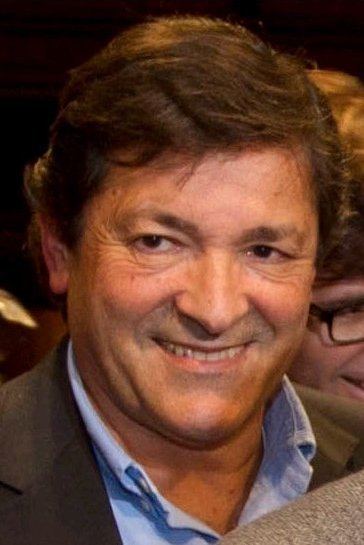25 March 2012 → 2015 18 January 2011 14 February 2012 16 seats, 29.7% 10 seats, 20.0% | 23 October 2010 18 January 2011 15 seats, 29.9% 16 seats, 29.7% 17 12 | |
 | ||
The 2012 Asturian parliamentary election was held on Sunday, 25 March 2012, to elect the 9th General Junta of the Principality of Asturias, the regional legislature of the Spanish autonomous community of the Principality of Asturias. All 45 seats in the General Junta were up for election. The election was held simultaneously with a regional election in Andalusia.
Contents
This was a snap election held as a result of the incumbent government under Francisco Álvarez-Cascos failing to pass the 2012 budget in the General Junta after just six months in power. The Asturian Socialist Federation (FSA–PSOE) under Javier Fernández, which had scored first in votes but second in seats in the previous election, went on to win a decisive victory whereas Álvarez Cascos' Asturias Forum (FAC) lost its seat plurality of seats it had won in the previous election and fell from 16 to 12 seats. The People's Party (PP) was unable to improve on its 2011 results despite a change of leadership and remained stagnant at 10 seats, while United Left (IU–IX) grew from 4 to 5 seats. Voter turnout was the lowest since 1983, as just 51.1% of the electorate cast a ballot.
The election resulted in a draw between the centre-left (PSOE–IU) and centre-right (FAC–PP) blocs after the counting of the vote of those living abroad deprived FAC from a seat in the Eastern District, awarding it to PSOE. Union, Progress and Democracy (UPyD), which managed to get into parliament after failure in 2011 to do so, became determinant for either bloc to attain an absolute majority, with ensuing negotiations resulting in a Socialist minority government led by Javier Fernández.
Electoral system
The 45 members of the General Junta of the Principality of Asturias were elected in 3 multi-member districts using the D'Hondt method and a closed-list proportional representation system. Unlike other regions, districts did not coincide with provincial limits, being determined by law as such:
Each district was entitled to an initial minimum of 2 seats, with the remaining 39 seats allocated among the three districts in proportion to their populations. For the 2012 election, seats were distributed as follows: Central District (34), Eastern District (5) and Western District (6).
Voting was on the basis of universal suffrage in a secret ballot. Only lists polling above 3% of the total vote in each district (which include blank ballots—for none of the above) were entitled to enter the seat distribution.
Party vote
Poll results are listed in the tables below in reverse chronological order, showing the most recent first, and using the date the survey's fieldwork was done, as opposed to the date of publication. If such date is unknown, the date of publication is given instead. The highest percentage figure in each polling survey is displayed in bold, and the background shaded in the leading party's colour. In the instance that there is a tie, then no figure is shaded. The lead column on the right shows the percentage-point difference between the two parties with the highest figures. When a specific poll does not show a data figure for a party, the party's cell corresponding to that poll is shown empty.
Seat projections
Opinion polls showing seat projections are displayed in the table below. The highest seat figures in each polling survey have their background shaded in the leading party's colour. In the instance that there is a tie, then no figure is shaded. 23 seats were required for an absolute majority in the General Junta of the Principality of Asturias.
Post-election
After the election, the leader of the Asturian PSOE, Javier Fernández, and incumbent Asturian President, Francisco Álvarez Cascos, were tasked to form a coalition government. The election led to a political impasse as the center-left (PSOE and IU-IX) and center-right coalitions (FAC and PP) each gained 22 seats in the election (23 seats are required for a majority in the 45-seat Assembly). The remaining seat was held by the centrist UPyD, which became the kingmaker in the negotiation.
Coalition talks took almost two months to reach an agreement. One of the main events during the negotiation was the legal battle in the Spanish Constitutional Court over the 45th seat, the assignment of which was delayed by the counting of the ballots of those voting abroad. FAC disputed the seat's assignment to the PSOE and asked for a revote; however, the Constitutional Court rejected the appeal and upheld the seat for the PSOE.
UPyD finally agreed to support a PSOE government, their main reason to do so being the threat by Finance Minister Cristóbal Montoro to intervene in Asturian government accounts. On 23 May 2012, PSOE leader Javier Fernández was elected as the new President of the Principality of Asturias with support from IU and UPyD.
